Improving Productivity for BPMs LP
Raising CX & Profitability for Conneqt Business Solutions Limited (CBSL) with Flow
The workforce management (WFM) team is hard at work with planning and forecasting for the next cycle, while simultaneously carrying out real-time que management and other tasks that make up the daily routine of the team. It is on the accuracy their predictions and planning that the contact center’s performance will depend in the next cycle, walking the thin line between being overstaffed or not meeting the SLA. On the team’s shoulders lies the responsibility of balancing customer delight with profitability.
Flow allows us to seamlessly manage the entire lifecycle of Workforce Management with just one solution. It gives us complete visibility of all our data, elevates customer experience and maximizes productivity . With Flow, CBSL has enhanced its data-driven insights.
Shashi Puthran
AVP WFM and MIS, Conneqt Business Solutions Limited
Conneqt Business Solutions Limited (CBSL) is the second largest CLM and BPM player in India’s domestic market. The Business Process Services arm helps organizations across multiple industries reimagine business processes for a digital world and specializes in enriching clients’ conversations with end customers.
The WFM team at CBSL is responsible for overall business planning and revenue management. They constantly work towards accurately forecasting call volumes, plan capacity and schedule rosters so that their operations team can meet the BPM and Shared Service Center SLAs agreed with their clients. Their planning is always 60 days ahead and usually takes multiple iterations of forecasting and capacity planning.
CBSL’s BFSI client run their business from multiple locations that has siloed data within locations. To add complexity, the solution is deployed in a hosted environment. For every data point, they had to coordinate with local teams in each location, which was time consuming, tedious and iterative. This dependence caused delays in generating data, sharing data and driving any actions based on that data.
A BPM can elevate customer experience and profitability only when the WFM team successfully orchestrates the availability of the right agent with the right skills at the right time for every customer interaction. The CBSL WFM team extracted and cleansed data manually and collated it into spreadsheets. Using machine learning (ML) functionality built into spreadsheets for forecasting call volumes was also manual, making forecasting slow and tedious. Spreadsheets severely limited the amount of data they could consume, affecting the accuracy of the predictions.
It usually took weeks of effort and iterations for the team to lock the forecast, build the capacity plan and prepare weekly rosters. They needed to plan faster, better and with more confidence. Falling short would impact the business to achieve SLA and also to get support from departments like hiring and training, who needed information well in advance to onboard and train the right resources.
The Ask
Flexibility to integrate with existing infrastructure without changes, upgrades, reskilling or other costs.
Visibility of data across locations through independent access to data.
Precision of forecasting and planning to enhance trust in the outcomes.
Velocity through automation for shortening planning cycles.
Human intelligence to compound AI/ML to get deeper insights.
CBSL evaluated WFM solutions available in the market which could integrate data and automate their processes. While the tools were very capable at what they did in their own space, each had areas which CBSL wanted customized to their needs. Some of these tools did not integrate with existing client infrastructure. For most, the addition, enhancement or customization of a feature in the existing modules of these standard products would impact each customer, limiting option to tailor for CBSL’s needs. Yet another challenge was posed by the hosted environment, since the customer did not allow direct integration for third party tools.
This is when, based on demonstrated capability in an earlier engagement, CBSL approached Intellicus to solve these challenges.
Flow has inherent flexibility that allows custom-designing a WFM solution for every customer.
Flow has the capability to integrate with multiple sources, or when that is not possible, supports both pushing and pulling data as part of ETL. Flow includes a custom-built middleware, which is an upload utility for integrating and consuming the right data from the ACD, HRMS, flat files, emails, chats and other data sources. Clients can choose to ‘push’ files manually at fixed frequencies or Flow can schedule a ‘pull’ from end destination such as FTP, email etc.
Flow’s upload utility utilizes templates that can be customized for any data sources being consumed and any data structure.
CBSL used Flow for creating a Center of Excellence by consolidating data siloed in multiple data sources
Team Intellicus began with integrating all the data, across multiple locations and IT systems to create a single source of truth which gave CBSL direct access to data anytime from across locations. The team worked around the limitation of third-party integration with the client systems by giving them the option of populating the data at the end source and pushing raw files through the upload utility. Pushing raw files means that no cleaning or formatting by the CBSL MIS team as the upload utility performs data cleansing, rejecting any batch if any data is missing or mismatched.
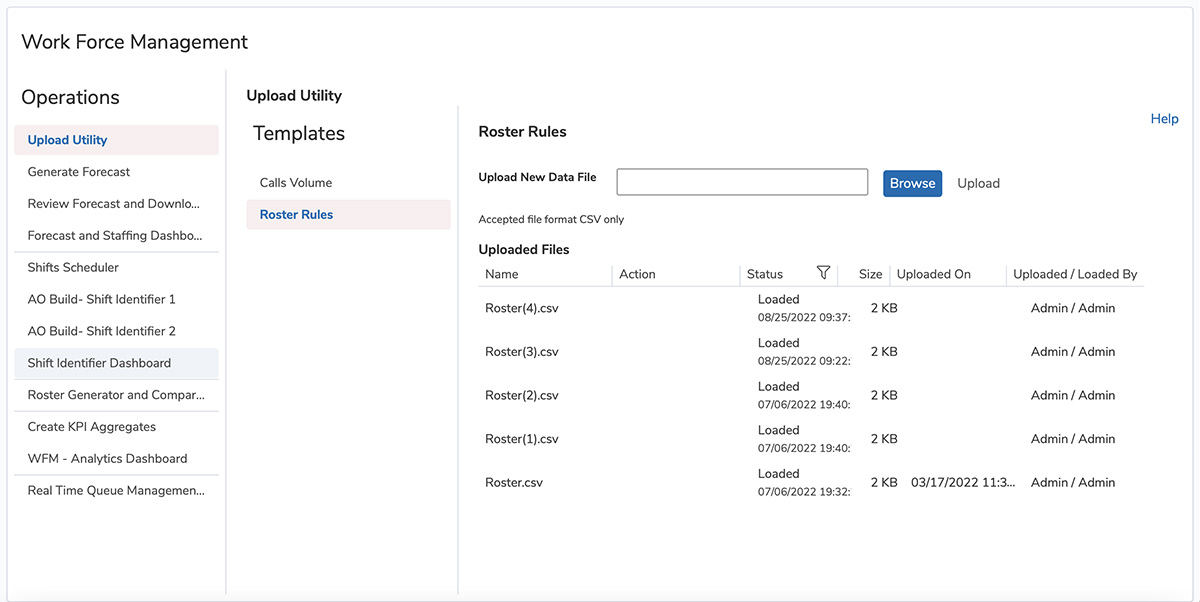
CBSL improved the speed and accuracy of forecasting with Flow.
Once CBSL had attained visibility of data across every location, Flow’s AutoML based module used the full extent of the data from every location to bring precision and intelligence to forecasting. Flow gave CBSL the power and flexibility of training the AutoML module over different training periods, from the last hour to the last decade. Flow’s interface puts far more data science at the disposal of business users than possible through spreadsheets. Flow’s interface gave business the option of not worrying about algorithms at all through the low-code/no-code feature or to choose from many powerful new algorithms if they desired more control.
The team could now run multiple iterations using AutoML algorithms and evaluate their accuracy before finalizing the forecast. The AutoML module understood the complete grain of data and produced the result in the similar fashion, so they didn’t have to go skill by skill. They achieved this in a fraction of the time they’d have taken to run one cycle earlier.
With Flow, the time required to generate, deliver and distribute predictions went from multiple weeks to a few minutes, freeing the team to focus on productivity.
Flow allows WFM specialists to add human intelligence
To achieve the 80/20 SLA of answering 80% of the call in 20 seconds, the team needed to keep a threshold for average handle time, occupancy and shrinkage. They needed to layer their expertise over the ML module output. Through the what-if module, Flow allows WFM teams to maneuver parameters for both forecasting and capacity, eliminating all need to manually add buffers as they had done in the past.
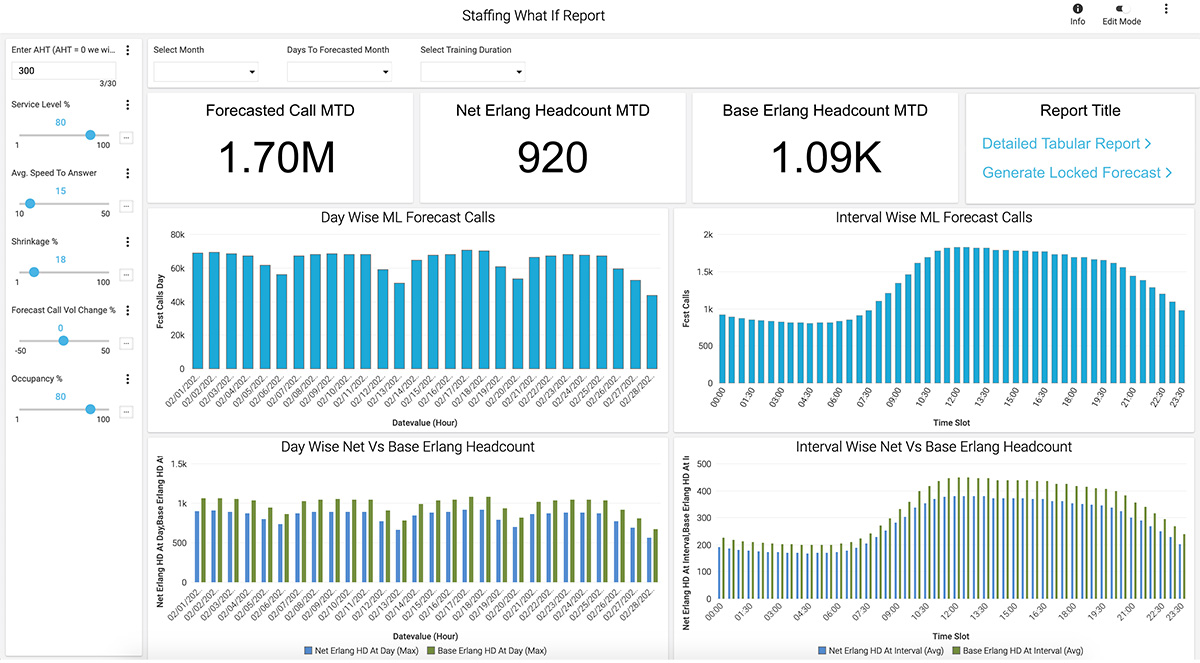
If the team wants to look at the growth in the forecast predicted by the module, they can just use the module to write back on it and view the result in a matter of few seconds. In addition, they can use capacity parameters customized for business needs for multiple contractual KPIs such as SLA, ASA, AHT, shrinkage, occupancy, TAT or concurrency. They also had an option to use either the historical performance of each of these parameters or the contractual threshold to evaluate the most apt headcount for the business, offering a choice between both, basis the best fitment for the business.
After forecasting and capacity planning, the WFM team next uses Flow to plot the shifts for the business which helps them to cut additional costs by plugging leakage and optimizing scheduling. Flow optimizes staffing to provide the suitable staff headcount and schedules them accurately as per the forecast. This helped the team to reduce variance between actual and forecasted data to better understand volume and staffing needs.
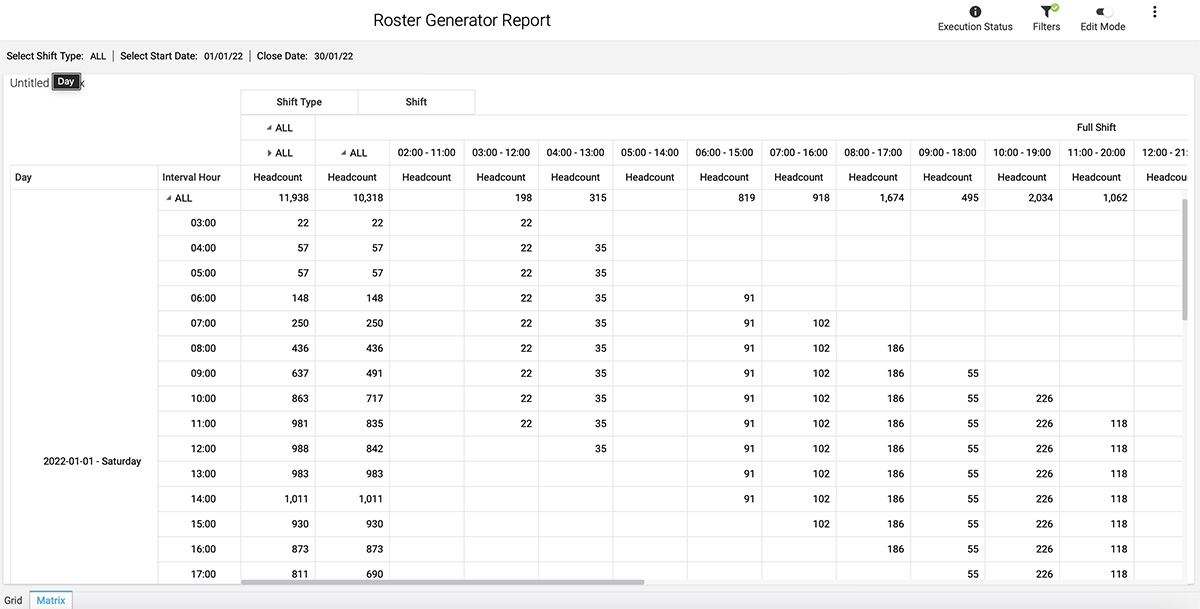
Flow brought convenience to matching arrival pattern with staffing need so that the WFM team could define the type, number and combination of shifts that worked best for them. Flow allowed them to design the optimal shift plan for the business through ML-based algorithms. They could factor in workload prediction, capacity plan and rules to find the best shift plan that included combination of fulltime, part time or split-time shifts. CBSL leveraged the minimized leakages to save costs and to increase productivity via skill enhancement.
Improved overall efficiency through identifying quality drivers and understanding their impact on the business resulted in maximized revenue.
The WFM team also used Flow to roster the right mix of talent and eliminate manual, repetitive and tedious tasks. Flow also helped the team to combine data from multiple sources to build intelligent rosters and automated exceptional alert management. By factoring in business rules along with employee performance, leaves, special timings for women and many more criteria, the WFM team built social and human intelligence into the roster.
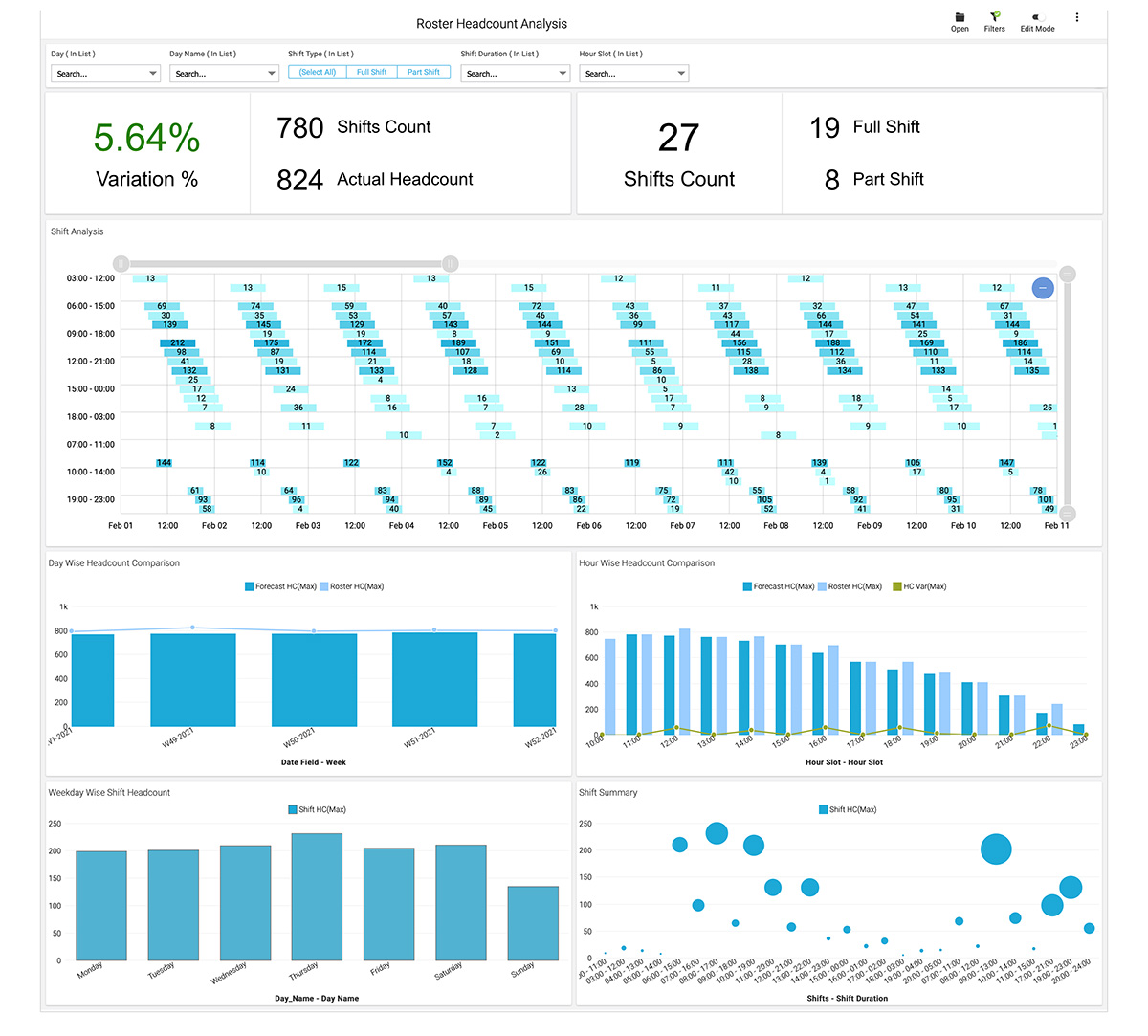
The headcount variance at CBSL has gradually been eliminated. Where earlier the team included a buffer in the capacity planning to mitigate risks, CBSL has now moved to having no buffer at all. Scheduling and rostering at CBSL are now in 100% alignment with Flow’s predictions.
With Flow, CBSL observed major improvement in resource management. They were able to control leakages to sub-3% by intelligently scheduling the right skill set for the right task at the right time.
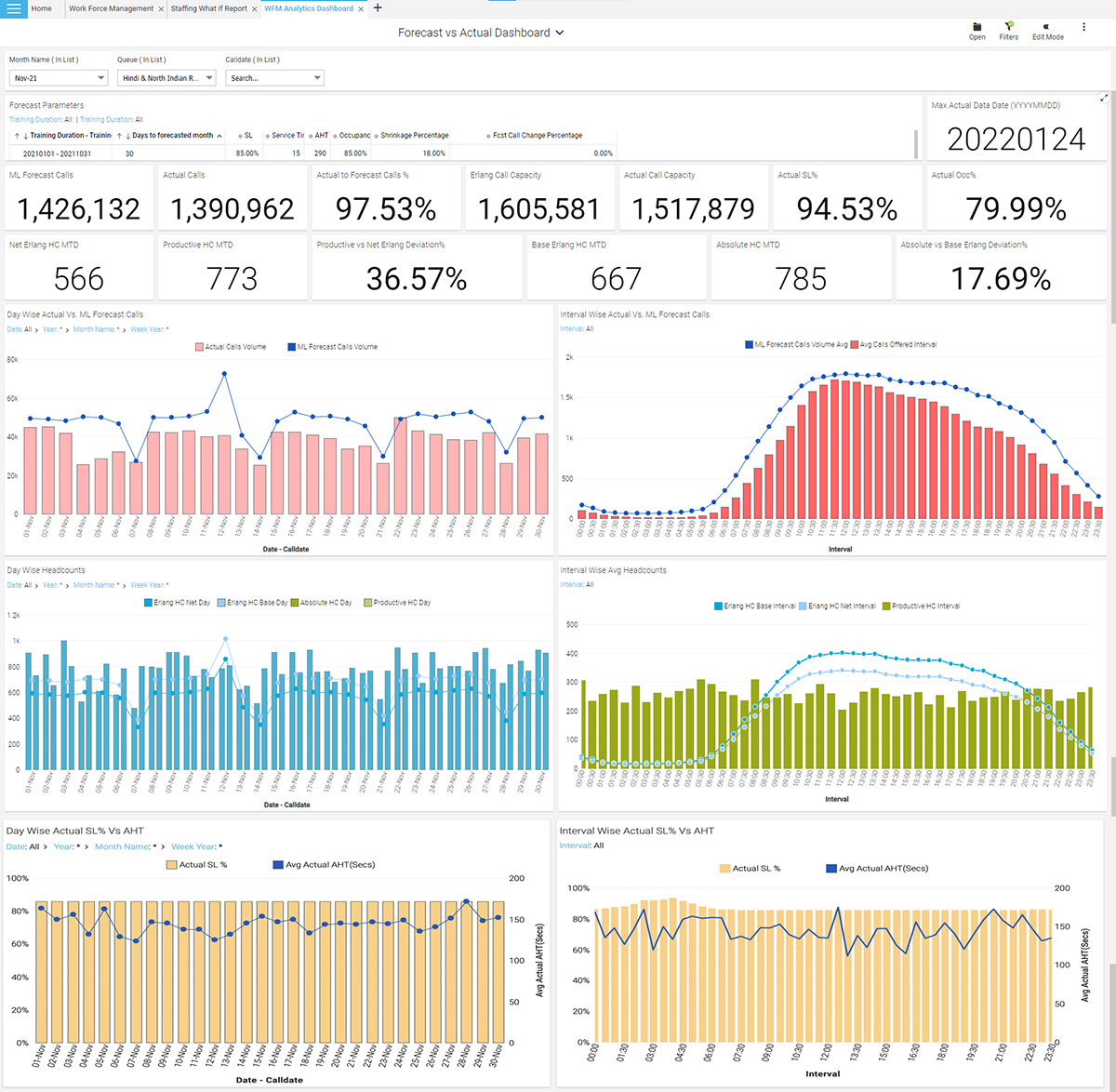
Flow offered WFM analytics for real time and historical data. The real time performance dashboard gave access across hierarchies to monitor business critical KPIs such as schedule adherence, service and answer levels, ASA and many more. It also included real-time outlier performance alerts which saved time and triggered proactive action. The historical dashboard combined data from multiple sources to provide 360-degree view for the business.
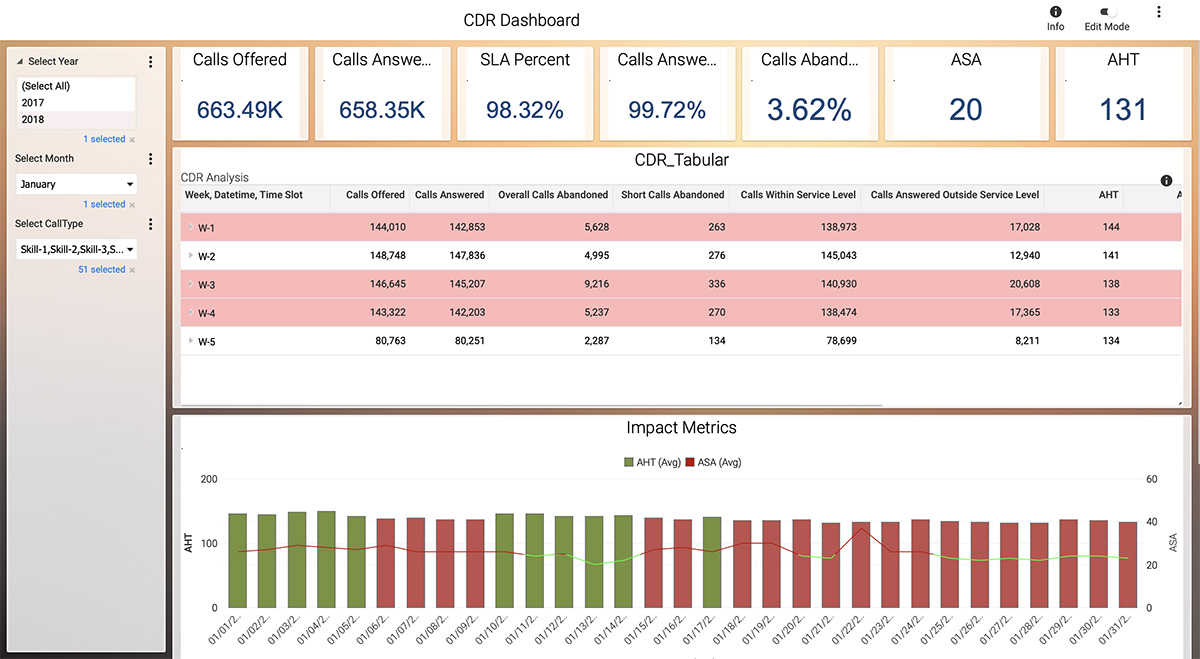
With Flow, the WFM team now gets to see KPIs for every hour within a few minutes past the hour. This allowed the team to dynamically correct course and optimize the floor based on the past hour’s data.
Forecast with confidence
Freed from tedious, manual and repetitive tasks, the WFM team at CBSL can now focus on improving productivity, plugging leakages and maximizing revenue. The team have full visibility of the data, can use its entire extent and depend on AutoML for faster and improved forecasting. Matching the best agent for every customer and making the best of every customer engagement is now easy with real-time analytics. With Flow, CBSL has found multiple efficiencies and managed to elevate customer delight at the same time.
To learn how Flow can help you raise the bar for both BPM profitability and customer experience, connect with us at www.intellicus.com/contact-us